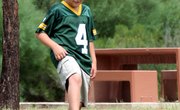High school students with active imaginations and limitedless energy love exploring business opportunities for young adults. The principles of entrepreneurship demand innovation, organization, planning and execution. Though there is no single way to become a successful entrepreneur, there are many ways to simultaneously determine if high school students have what it takes to make it as an independent worker and also help them engage in activities which test the aforementioned skills. Entrepreneurship projects for high school students also teach the value of hard work and determination.
Develop Small Business Plan
Engaging both creative and organizational skill sets, developing and executing a small business plan is an excellent way to assess students’ ability to take a holistic approach to entrepreneurship. Your class will have fun coming up with business ideas for teens to try. Introducing business opportunities for young adults should begin with brainstorming a business focus, to researching potential markets or venues into which students introduce the business, to the composition of a business plan to the actual execution of the business plan and sustaining of a business. Well orchestrated entrepreneurship projects for high school students can turn out to be actual money makers.
Organize Charity Event or Fundraiser
Don't limit your business ideas for teens to commercial ventures. Entrepreneurship projects for high school students can be launched for altruistic purposes. Similar in scope to developing a business plan, designing a charity or fundraiser drive enables students to develop skills necessary to engage in budgeting, scheduling and managing. Charity or fundraiser drive activities should be centered around a charity or event of the students’ choosing. Students should pick a fundraising goal in the form of a dollar amount and proceed to generate a specific fundraising plan for reaching that goal.
Try Product and Service Development
Product or service development focuses on the brainstorming element of business development activities, but calls for students to focus more on tailoring an individual product or service to a specific market that would benefit from the product or service. Students should conduct market research to determine where their product or service might be needed, by whom and for what. In doing so, students should also make necessary alterations to the product or service so as to better promote it for a specific group. Successful business opportunities for young adults are often geared to goods and services popular with the youth market.
Launch Advertising Campaign
Ad-campaign activities are excellent complimentary activities for each of the previously listed activities. Upon designing a product or service or picking a charity, students should figure out how this product, service or charity can be promoted to its target market. Students choose a media form or forms through which to promote the product, service or charity, and develop commercials, infomercials, print ads or other advertising forms. Students then deploy their campaign and record responses and reactions by the target market.
Related Articles
References
Writer Bio
Samuel Hamilton has been writing since 2002. His work has appeared in “The Penn,” “The Antithesis,” “New Growth Arts Review" and “Deek” magazine. Hamilton holds a Master of Arts in English education from the University of Pittsburgh, and a Master of Arts in composition from the University of Florida.











